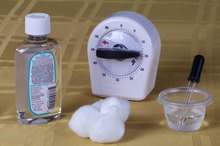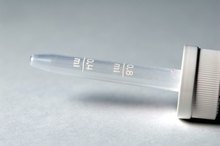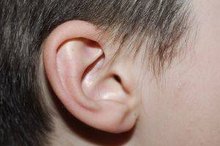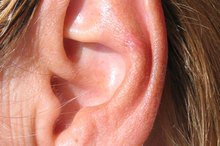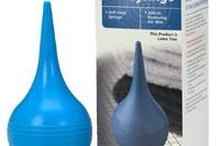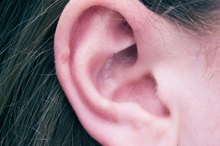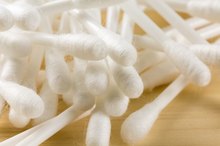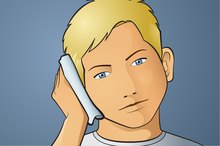Can You Remove Ear Wax with Baby Oil?
Ear wax serves an important purpose; it protects the ear canal from bugs, dirt, debris and bacteria. In most cases, the ear cleans itself and ear wax causes no symptoms or problems. When ear wax accumulates and blocks the ear canal, coughing, ringing, pain, itching or hearing loss may result. Most wax blockages are treatable with baby oil at home. According to the American Academy of Otolaryngology, you should only remove ear wax when it causes discomfort or interferes with hearing 1.
If you are experiencing serious medical symptoms, seek emergency treatment immediately.
Warm 1 or 2 tsp. of baby oil to body temperature. The University of Maryland Medical Center warns that placing any liquid that is warmer or cooler than your body temperature into your ears can trigger vertigo, dizziness or discomfort.
The Best Way to Clean Out Your Ears
Learn More
Tilt your head so that the affected ear is facing up toward the ceiling. Grab the outer part of your ear and pull down and out. This will open up your ear canal to allow the baby oil to reach the wax blockage.
Place two to three drops of baby oil into your ear canal using an eyedropper. Do not insert the dropper into your ear canal. You should feel the liquid draining down your ear canal. Keep the affected ear tilted for several minutes.
How to Remove Impacted Ear Wax
Learn More
Hold a clean towel or paper towel over the affected ear, and then slowly tilt the affected ear down toward your shoulder. The towel will catch any baby oil as it drains from your ear.
Repeat this process twice each day for several days. It may be easiest to use the baby oil before showering in the morning and washing your face before bed.
Flush the wax out of your ear canal using a bulb syringe and lukewarm water. Press the bulb syringe gently and then turn the affected ear downward and allow the water to drain out. If the wax was sufficiently softened by the baby oil, it should come out with the water.
Place a few drops of rubbing alcohol into your ears after flushing them. This will dry your ear canal and prevent bacterial growth. Pain or stinging may indicate a punctured eardrum that requires medical treatment.
Repeat this process a second time if you continue to experience symptoms of a wax blockage. If there is no improvement after one week, consult your doctor for advice.
Related Articles
References
- American Academy of Otolaryngology: Earwax
- The Medical Consumer's Advocate: The Ear Wax FAQ
- MayoClinic.com: Earwax Blockage
- Got an ear full? Here's some advice.Harvard Medical School. 2018.
- Is It Really Dangerous to Clean My Ears with Cotton Swabs?. Cedars-Sinai. 2018.
- Ear Wax. US National Library of Medicine. 2018.
- Ear Wax. Mount Sinai.
- Impacted Earwax. Cedars-Sinai.
- Schwartz SR, Magit AE, et al. Clinical Practice Guideline (Update): Earwax (Cerumen Impaction). Otolaryngol Head Neck Surg. 2017;156(1):S1-S29. doi: 10.1177/0194599816671491
- What’s Earwax?. KidsHealth from Nemours.
- American Academy of Otolaryngology—Head and Neck Surgery. Earwax
- American Speech-Language-Hearing Association. Nothing Smaller Than Your Elbow, Please
Writer Bio
Sandra Ketcham has nearly two decades of experience writing and editing for major websites and magazines. Her work appears in numerous web and print publications, including "The Atlanta Journal-Constitution," "The Tampa Bay Times," Visit Florida, "USA Today," AOL's Gadling and "Kraze Magazine."
